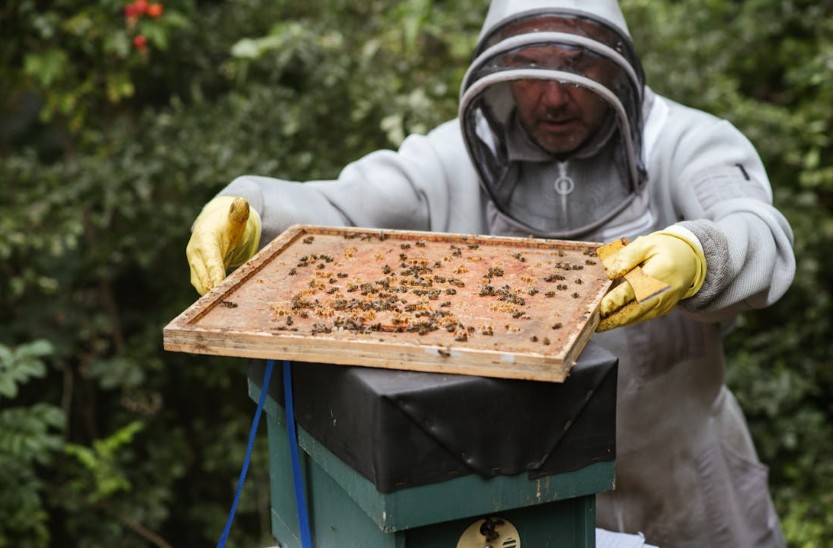Bee infestations in or around homes and commercial spaces can quickly escalate into a real problem—especially when hives are tucked away in walls, ceilings, or garden structures. Although bees are essential pollinators and support our environment, having them nest too close to where people live or work can bring risks like stings, allergic reactions, and even structural damage. That’s why choosing the right time for hive removal matters. If you’re considering beehive removal in Melbourne, winter offers a unique advantage and is often the safest, most effective time to get it done.
Bees Removal Melbourne has extensive knowledge of how local bee species behave through the seasons. This insight makes winter the perfect time for removal—offering a calmer, more controlled environment with less risk to people and bees alike
Bee Activity in Melbourne’s Warmer Months
During spring and summer, bees are at their busiest. Colonies are growing, hives are expanding, and worker bees are out in full force collecting pollen. These warmer months are also prime time for swarming—a natural process where a portion of the hive breaks off to find a new home. It’s common to see swarms resting on fences, tree branches, and even building eaves.
Approaching an active beehive during this time can be risky. The bees are highly protective of their colony, making them more likely to sting when disturbed. This level of activity makes removal challenging and potentially dangerous for untrained individuals.
What Happens to Bees in Winter
Winter in Melbourne typically sees a significant drop in bee activity. As temperatures fall, bees retreat into their hives to conserve energy and maintain warmth. Unlike summer, where thousands of bees may be flying in and out of a hive, winter colonies stay mostly inside and cluster together.
This inactivity makes the hive easier to manage. Bees are less aggressive and less likely to sting when disturbed, reducing the risk of harm during removal. Fewer bees in motion also means there’s less disruption to surrounding areas, making it a safer experience for residents and pets alike.
Why Winter is Ideal for Beehive Removal
There are several practical and safety-related reasons why winter is considered the best time for beehive removal in Melbourne:
1. Reduced Risk of Stings
With bees less active and generally remaining inside the hive, the risk of stings during removal is significantly lower. This is particularly important when hives are located near high-traffic areas or homes with children or pets.
2. Easier Hive Access
Because bee activity is reduced, it’s easier to work around the hive. Professional teams can take the time to fully assess the structure and remove it thoroughly, without being rushed by defensive bee behaviour.
3. Prevent Spring Infestations
Removing a hive in winter prevents it from becoming a fully populated colony by spring. If left unattended, hives can double or triple in size once warmer weather returns. Taking care of the problem early saves time, reduces future risk, and can significantly lower the bee removal cost.
4. Safer for the Bees
Winter removal allows for safer relocation of bees to managed environments, such as apiaries. Because the colony is dormant, it’s easier to move them without causing stress or harm.
Where Bees Nest in Melbourne Homes
Bee hives can show up in a variety of surprising places. In Melbourne’s suburbs and residential areas, it’s common to find bees nesting in:
- Wall cavities
- Chimneys
- Ceiling spaces
- Garden sheds
- Tree hollows
- Under decks or eaves
Often, homeowners won’t notice a hive until it’s well-established, especially when it’s tucked away in a hidden space. That’s why regular inspection and early detection are key.
Bee Control in Melbourne: Prevention Matters
Prevention plays a big role in long-term bee control in Melbourne. While winter is the best time to remove an existing hive, it’s also a great time to take steps to avoid future infestations.
Sealing cracks in walls, repairing roof gaps, and covering vents with mesh are simple but effective measures. Gardeners can also consider planting native flowers away from buildings, giving bees a more attractive place to forage that’s safely distanced from the home.
DIY vs Professional Hive Removal
While some may consider removing a hive themselves, this approach carries significant risks. Without proper protective gear or knowledge of bee behaviour, disturbing a hive—even in winter—can lead to stings or incomplete removal. If part of the hive remains, bees may return, or worse, pests like ants or rodents may take over the abandoned structure.
Professional services have the training and equipment to safely handle removal, including identifying the bee species, ensuring complete hive extraction, and offering advice on future prevention. This is especially important when dealing with native bees, which are essential to local biodiversity and may require relocation rather than extermination.
Understanding Bee Removal Cost in Melbourne
One common concern for property owners is the bee removal cost in Melbourne, which can vary based on factors like hive size, location, accessibility, and whether relocation is needed. Winter often leads to simpler, more affordable removals due to the bees being less active and easier to manage. Many bee control providers offer free inspections or consultations, giving homeowners peace of mind and a clear understanding of the process before committing. Acting during the colder months can also help prevent costly damage from hive growth or honey seepage later on. If there’s a hive on your property, now is the time to act—before spring brings a surge in bee activity. Bees Removal Melbourne provides safe, environmentally responsible beehive removal solutions tailored to your situation. For expert advice or a no-obligation quote, call 03 9021 3752 today and take the first step toward a safer, bee-free space.




